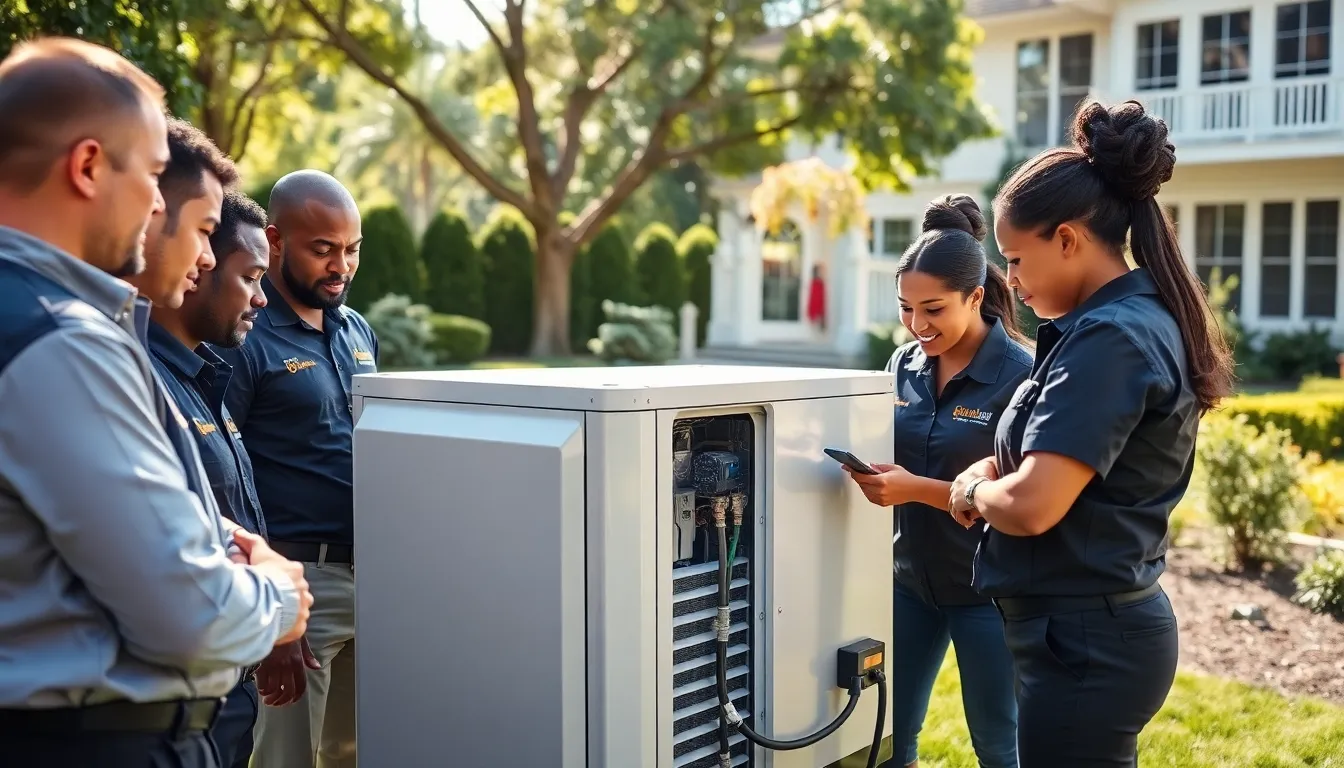Imagine this: a storm brews on the horizon, dark clouds loom, and suddenly, the lights flicker. Panic sets in. But not for you. Why? Because you have a whole home generator silently standing by. Just like your trusty car, these powerhouses need TLC to keep them in top shape. Let’s jump into the world of whole home generator maintenance and ensure that when Mother Nature throws her best tantrum, your home stays lit.
Table of Contents
ToggleUnderstanding Whole Home Generators

Whole home generators are more than just backup systems: they are your home’s shield against power outages. Unlike portable models, these units are permanently installed, connected directly to your home’s electrical system. When the grid goes down, your whole home generator automatically kicks in, ensuring your fridge keeps running and your Netflix binge-watching continues uninterrupted. With varying types, propane, natural gas, and diesel, each has its quirks and maintenance needs. Knowing these details can help homeowners make informed choices about their systems.
Importance of Regular Maintenance
Regular maintenance of whole home generators is crucial. Neglect can lead to costly repairs and, worse, a non-functional system when it matters most. Picture this: a beefy storm hits, and you flip the switch, only to hear crickets. This scenario is all too real for those who skip their regular check-ups. Maintenance prevents simple problems from escalating. Plus, keeping your generator in peak condition ensures that it’s reliable and efficient, extending its lifespan.
Basic Maintenance Tasks
Maintaining a whole home generator might sound daunting, but with a few basic tasks, it’s actually quite manageable. Here’s a handy roadmap to get you started:
Seasonal Maintenance Checklist
Consider inspecting your generator at least twice a year, spring and fall are ideal times. This involves cleaning around the area to prevent debris buildup and conducting a visual inspection to catch any wear and tear before it escalates.
Checking Fuel Supply and Quality
Fuel quality is paramount. Old fuel can cause clogs and performance issues, especially in gas generators. Always check the fuel supply and replace it if it’s been sitting for more than a year. Using fuel stabilizers can help maintain quality.
Inspecting Battery and Electrical Connections
Batteries play a pivotal role in startup. Check connections for corrosion and ensure terminals are tightly fastened. A clean, well-connected battery means your generator gets the juice it needs when the time comes.
Testing and Running the System
Just like testing your smoke alarms, running your generator every month can reveal potential problems before they occur. Let it run for about 15 minutes to ensure it starts smoothly and functions as intended.
When to Call a Professional
While many maintenance tasks are straightforward, some issues require a professional. If unusual noises, vibrations, or a failure to start occur, it’s time to call in the experts. Also, if your generator is over a decade old, consider having it inspected by a certified technician who can evaluate its condition and recommend necessary service or replacements.


